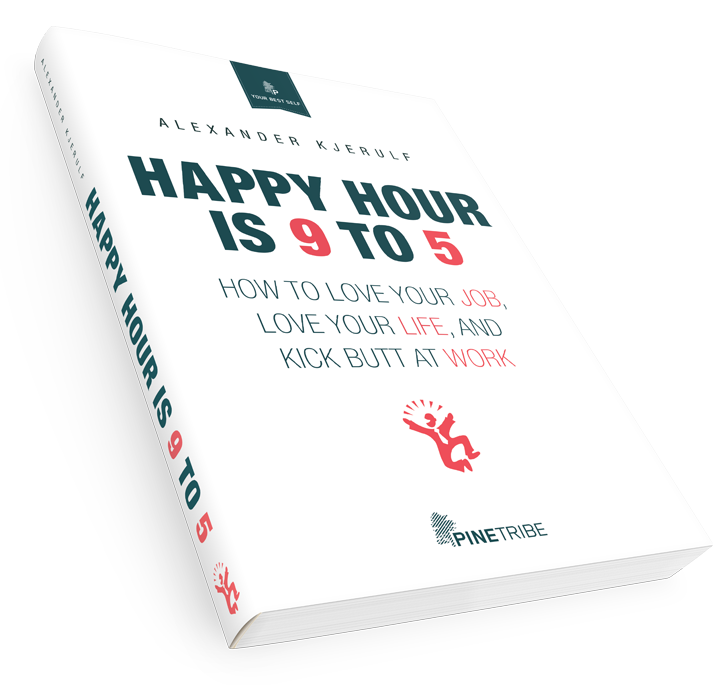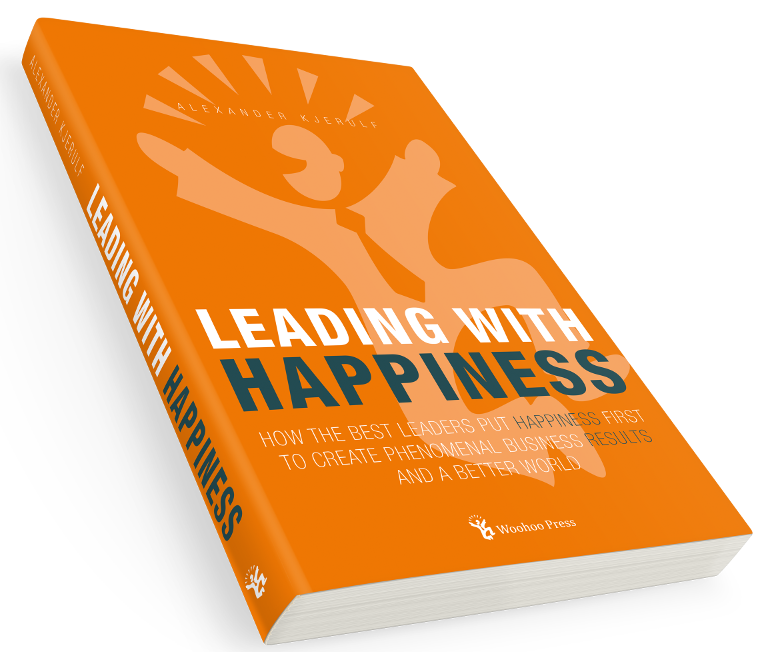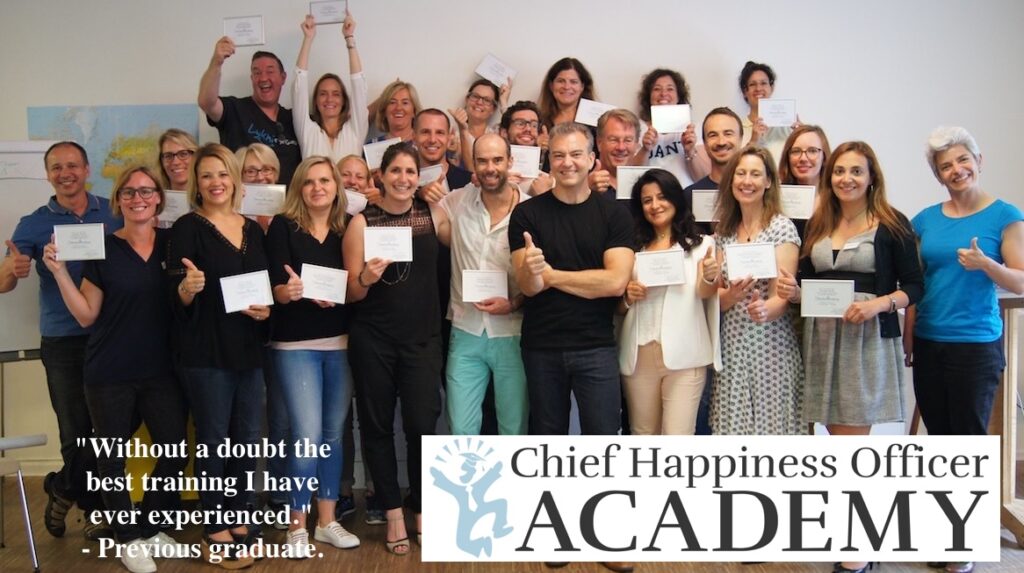-
See us speak around the world

We’re speaking at some awesome events around the world – join us and learn how to make workplaces happier and more succesful.
September 19-20, Krakow: Poland’s first conference on happiness at work
September 27, Brussels: Closing event for the International Week of Happiness At Work
October 10-11, Prague: the 5th Czech Happiness@Work conference
October 29-30, Santiago de Chile: Happy People Better Business conference
We’re also contributing to the first Global Online Happiness At Work Summit in September, which you can attend for free!
-
Our 4 best tips for a happy vacation
The Summer holidays are right around the corner here in the northern hemisphere and I am really excited for it. No matter how much you love your job, you should still look forward to some time off, where you can do something completely different.
But it’s important to do your vacation right. If not, you risk ruining the whole thing by doing emails at the pool or by feeling bad about the work you didn’t do before going on vacation. That’s not doing anyone any favors – not even the workplace – because time off from work is a prerequisite for happiness and productivity.
So here are our 4 best tips for having a happy vacation.
1: Actually take a vacation
I can’t believe I even have to say this, but in many countries people don’t take the vacation time they’re entitled to. One person wrote this comment on my blog:
I’m 34 and haven’t had a real vacation since my childhood vacations with my parents. The only way I manage to take an entire week off at a time (I work in IT) is when I’m able to schedule a week or two of “unemployment” between jobs, and in those periods, spending money on a trip is not wise.
I’m tied to my email/pager even on weekends and holidays and on the scattered “vacation” days I can take. Most Americans only get 2-3 weeks of combined sick and vacation time in any case, and professionals are expected to read email and be available, even on their days “off”.
I wonder how many people are able to have a real vacation these days!
US workers typically get very little vacation time, and often don’t even take all the vacation they do get. The Japanese have a similar problem where many workers don’t take the vacation days they’re entitled because they feel they’re letting down their coworkers.
Take your vacations. And if you work for a company that refuses to understand that human beings need time off from work, quit and go work for a company that actually cares about its people.
2: Get organized before you go
Clear out any outstanding work and your email inbox. This will give you clarity and control of any tasks. This sounds boring but it’s quite satisfying to get your work organized and go on vacation with an empty inbox.
And if you know there are important tasks that you can’t get done before you leave, hand them over to a coworker in plenty of time. Make sure to hand over the task with all necessary information so it’s easy for your coworkers to take over. That also keeps them from having to disturb you on your vacation, so you’re helping both them and yourself.
3: Don’t work on your vacation
Don’t bring the company mobile and don’t read work-related emails. Take a real vacation and let your brain do something completely different.
Instead, spend some time doing new things you’ve wanted to try for a long time but haven’t had time for. Go rollerskating, windsurfing, fishing or whatever strikes your fancy. Can I suggest swing dancing? It’s amazing!
Or maybe just kick off your shoes and go lie in a hammock. Stare out at the water. Have days with no plans and time for reflection.
4: Close your email inbox completely
If you have some vacation time coming up, and if you’re like most people, you will put up an autoreply email just before you leave, saying that you’re gone, when you’ll be back and who to contact if it’s urgent.
I have talked to many people who mention both of these as a source of stress and I’ve just seen too many parents on family vacations handling work emails on their phone/laptop by the pool, when they should’ve been playing with their kids.
Fortunately, there’s an alternative: Close your inbox while you’re away. This may seem like a weird idea but some workplaces are already doing it. Here’s how you can close your inbox completely on your vacation.
I’m taking all of July off and I will be doing exactly that.
The upshot
For crying out loud: Take your vacation time and make it a good one.
Related posts
- Every month this company forces one employee on a 2-week vacation.
- The fundamental unfairness of the “out of office” autoreply.
- 5 awesome corporate email policies.
-
Meet the 24 newest Chief Happiness Officers from our Academy

Meet the graduates from our 9th CHO Academy – 24 people from 16 countries came to Copenhagen for our intensive 3-day training in the theory and practice of happiness at work.
We had a fantastic time both in the training, on the site visit to IIH Nordic to study how they have created a happy organization with a 4-day work week and in the social activities around Copenhagen.
Íf you’re interested in learning all we know about happiness at work, the next Academy is in November in Copenhagen.
Here are some of our favorite photos from this Academy.
-
Happy McDonald’s worker
This is awesome – just think how many people are a little happier because of the way she interacts with her customers.
-
Announcing an extra CHO Academy, November 5-8 2019 in Copenhagen
 Graduates from the 2018 Academy in Copenhagen
Graduates from the 2018 Academy in CopenhagenWe are really excited for our next Chief Happiness Officer Academy this month. 25 participants from 16 countries are coming to Copenhagen to learn all the theory and practice of creating happy workplaces.
Amazingly, the Academy sold out over three months ago and even has long waiting list. So we have decided to add an extra Academy this year on November 5-8 in Copenhagen.
This is a great chance to come to one of the world’s happiest countries and learn all about happiness at work.
Read more about the Chief Happiness Officer Academy, see the full agenda and get your tickets here.
UPDATE: We just announced the November Academy and we already sold the first ticket :) Looks like these will be going fast too!
-
How to measure happiness at work – and how NOT TO
Most companies conduct regular job satisfaction surveys, but they often don’t work very well and fail to deliver tangible improvements to employees’ perception of their workplace. This leads to increased unhappiness among employees and from there to lower productivity and higher employee turnover.
In this video we cover:
- Why you absolutely should measure happiness at work
- Why traditional job satisfaction surveys often fail
- Better ways to measure happiness at work – ie. more often, more relevant and more valuable
- Share specific experiences from a company that tried it
- A very brief introduction to Heartcount – a unique new tool for measuring happiness at work
-
Wall of win at IKEA

Last week I did a workshop on “Leading With Happiness” for all the managers at an IKEA warehouse in Copenhagen and I have to say that it was an absolute pleasure. Like any other company, IKEA is facing many challenges and changes but this international group of 40 managers were clearly completely on board with the whole idea of happiness at work.
And while I was there, I stumbled on their wall of win – an entire wall of positive customer feedback, naming specific IKEA employees who’ve gone above and beyond.
What a simple but great way to celebrate your employees’ good work.
-
Awesome video: Dancing construction workers
This is AMAZING. A group of Canadian construction workers do a bhangra dance video to collect money for an autism charity.
-
Free webinar June 17: The best (and worst) ways to measure happiness at work + introducing Heartcount
Most companies conduct regular job satisfaction surveys, but they often don’t work very well and fail to deliver tangible improvements to employees’ perception of their workplace.
This leads to increased unhappiness among employees and from there to lower productivity and higher employee turnover.
In this free webinar we will cover:
- Why traditional job satisfaction surveys often fail
- Why you absolutely should measure happiness at work
- Better ways to measure happiness at work – ie. more often, more relevant and more valuable
- Share specific experiences from a company that tried it
- A very brief introduction to Heartcount – a unique new tool for measuring happiness at work
The webinar is on June 17 from 1:00 pm-1:45 pm Copenhagen time and it’s of course free. Sign up here.
-
The 3 most important things bosses should learn from swing dancers
In dancing – just as in business – there are leaders and followers. But if you think this means that “The leader always leads and the follower does what they’re told” then you’re very wrong.
Miranda van Wonterghem is an international swing dance teacher and in this amazing talk from our International Conference On Happiness at Work, she revealed the three main things business leaders should learn from dancers to create happier and more effective leadership – AND demonstrated it with dancing.
Connect
Get our newsletter
“I can’t believe it – a newsletter actually worth reading!”
– Subscriber
Over 6,000 people subscribe to our newsletter with tons of tips about happiness at work.
Get our books

“It’s very, very good. It’s incredibly well written, full of insights, and there are exercises to improve your own happiness at work. You can’t ask for more than that!”
– David Maister, author of Practice What You Preach

“What an inspiring book. Every leader should read it. This type of leadership has been integral to our success and I know it will boost your results too.“
– Garry Ridge, CEO WD-40 Company
Get Our Free Newsletter
Over 6,000 people already get our free newsletter with useful tips, videos, links and articles about happiness at work.
Subscribe to our newsletter here.














